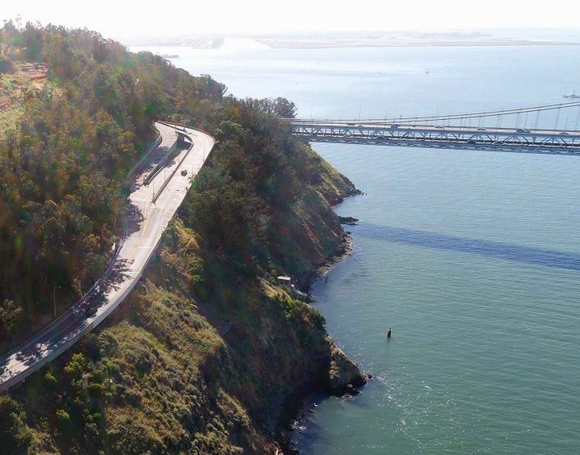Note: GJEL Accident Attorneys regularly sponsors coverage on Streetsblog San Francisco and Streetsblog California. Unless noted in the story, GJEL Accident Attorneys is not consulted for the content or editorial direction of the sponsored content.
The federal transportation grants from what was the TIGER program created under President Obama have been released, and journalists and advocates note that this new version of the program is generally good news for sustainable and active transportation. The RAISE (Rebuilding American Infrastructure with Sustainability and Equity) grants, as they are now called, do support some road and highway expansion, but most of the money is going towards projects like greenways, transit planning, and pedestrian and bike improvements.
Among them are four grants for projects in California.
One is a $1.2 million grant to plan the Yolo County Bike and Pedestrian Trail Network. Yolo is a mostly rural county in northern California that, like many rural areas in the state, lacks safe routes for people on foot and on bike. Although many of the county's roads are popular weekend bike routes, car traffic is fast and only very confident riders can enjoy biking them.
Yolo also contains several small cities, including Woodland, Davis, and the city of West Sacramento, and it encompasses the Yolo Bypass, a causeway on Highway 80 that has a bike path running alongside it. That bikeway has been eyed by engineers as an inexpensive way to widen the causeway, but it serves as an important regional connector for bike commuters heading in to Sacramento from Davis.
The new RAISE grant will help the county update its 2013-era circulation plan [PDF] with the development of a bike and pedestrian network plan, "based on community outreach, prioritization of underserved communities and areas of persistent poverty, and an assessment of e-bike and scooter charging feasibility."
A second grant, for $14.5 million, is for a project called Reconnecting Oakland: Safe, Reliable, and Equitable Access. This is a capital grant, not a planning grant, and will help pay for improvements to pedestrian, bike, and bus infrastructure in downtown Oakland. Those improvements include raised median refuge islands, buffered bikeways, signal adjustments, bulb-outs, high-visibility crosswalks and curb ramps for pedestrian and bike safety. It will also help install bus-only lanes with signal prioritization for buses, as well as new fiber-optic cable along several city corridors.
A third California grant is also going to the Bay Area: the Yerba Buena Island West Side Bridges Seismic Retrofit Project will receive $18 million.
This is a project to retrofit or replace seven older bridges that connect Yerba Buena Island, Treasure Island, and the city of San Francisco, of which these islands are officially a part. It is mostly focused on bringing the bridges up to seismic safety codes, but also readies the freeway onramps for a future toll plaza, and will include a transit-only onramp onto the bridge.
The project also includes a bike lane to help complete the connection from the Oakland Bay Bridge to Treasure Island, but does not address the hoped-for bike connection into San Francisco.
A fourth RAISE grant, for $24 million, will go to the California High-Speed Rail Authority for the Wasco SR 46 Improvement Project.
This is for improvements to State Route 46 where it crosses the under-construction high-speed rail line. The project will expand about a half-mile section of the road, lower it to pass safely under existing railroad tracks and future high-speed rail tracks, and build a roundabout at the intersection with Highway 43. It also includes some sidewalk and ADA improvements, as well as bike lanes through the area.
Advocates are pleased about this round of grants but remain wary. That they focus on transit, bike, and pedestrian facilities is a good sign for the future of sustainable transportation - although there are always caveats even within the planned projects.
And there is a lot of money yet to come from the infrastructure bill. Much of it will go out as competitive grants - in addition to the RAISE grants there is $1 billion for Reconnecting Communities, aimed at helping repair some of the damage done by past highway building, another $5 billion for safe streets, and more billions for transit and clean buses.
But even with this new, robust support for transit and active transportation, the vast majority of the bill is still for roads and highways, including new ones that will add to the nation's future maintenance burden.






